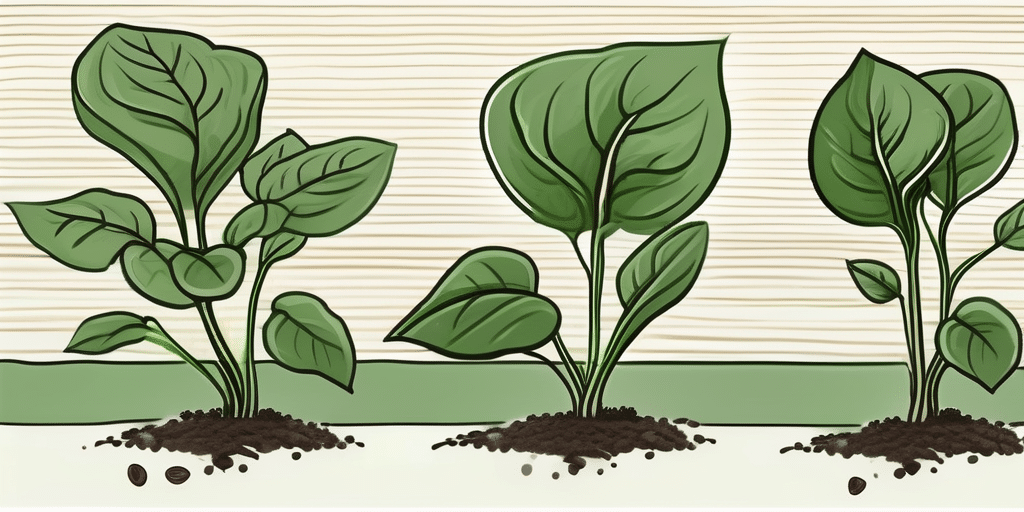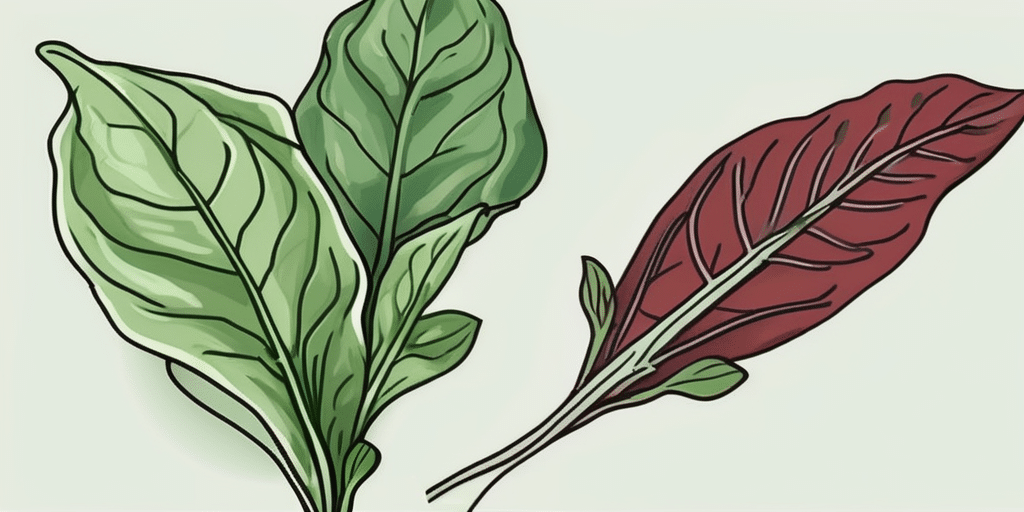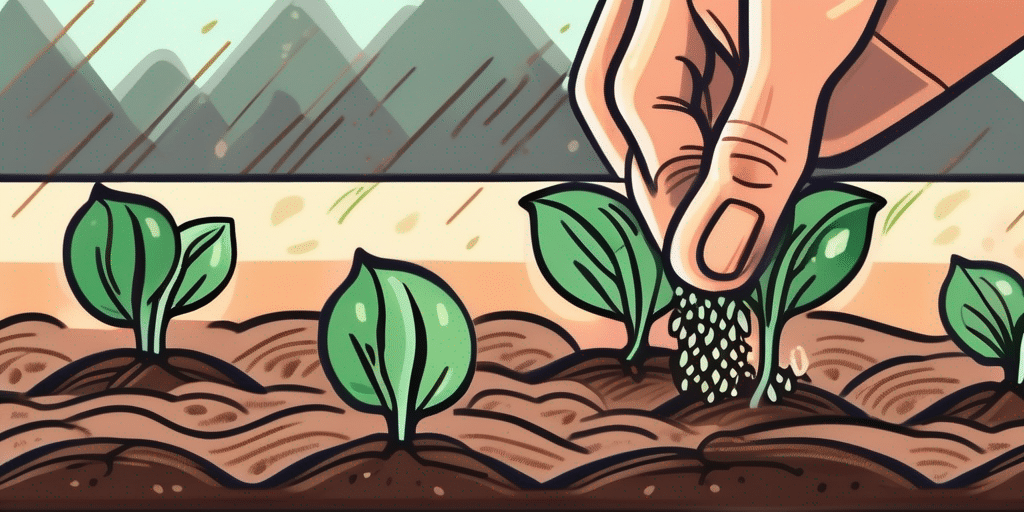Winter spinach is a fantastic crop to grow in Georgia. Not only does it tolerate the colder temperatures of the winter months, but it also produces delicious and nutritious leaves that can be used in a variety of dishes. In this article, we will explore when to plant giant winter spinach in Georgia and how to grow it successfully.
Climate & Hardiness Zones in Georgia
Before we dive into the specifics of growing giant winter spinach in Georgia, it’s essential to understand the climate and hardiness zones in the state. Georgia falls primarily under the USDA hardiness zones 7 through 9a, which means it experiences mild winters with average lows ranging from 0°F to 25°F (-18°C to -4°C).
These zones provide a useful guideline for determining the appropriate planting time for winter crops like spinach in Georgia. Keep in mind that microclimates can exist within these zones, so it’s always a good idea to consult with local agricultural authorities or university extensions for more precise information about your specific area.
Georgia’s diverse geography contributes to its varying climate conditions. The state’s northern regions, such as the Blue Ridge Mountains, experience cooler temperatures and higher elevations compared to the coastal plains in the south. This geographical diversity results in unique growing conditions for different crops across the state.
Furthermore, the proximity of Georgia to the Gulf of Mexico influences its climate, bringing warm, moist air that can lead to milder winters and hot, humid summers. This subtropical climate is favorable for a wide range of crops, including peaches, pecans, and peanuts, which thrive in the warm temperatures and ample rainfall.
When to Plant Giant Winter Spinach in Georgia
In Georgia, the ideal time to plant giant winter spinach is in the early fall, around September or October. Planting during this period allows the spinach to establish a strong root system before the cold weather sets in.
Winter spinach, also known as Bloomsdale Giant, is a cold-hardy variety that thrives in the cooler temperatures of Georgia’s winter months. This leafy green vegetable is packed with nutrients like vitamin A, C, and K, making it a popular choice for home gardeners and farmers alike.
When sowing the spinach seeds, make sure to follow these steps:
- Prepare the soil by removing any weeds, rocks, or other debris.
- Amend the soil with organic matter, such as compost, to improve its fertility and drainage.
- Make shallow furrows in the soil, around 1/2 inch (1.3 cm) deep and 12 inches (30 cm) apart.
- Place the spinach seeds into the furrows, spacing them about 1 inch (2.5 cm) apart.
- Cover the seeds with a thin layer of soil and gently press it down.
- Water the area thoroughly but gently to ensure good seed-to-soil contact.
Following these steps will promote proper germination and establishment of the spinach plants.
It’s important to monitor the spinach plants for pests and diseases, especially during the winter months when certain pests like aphids and slugs may be more active. Applying organic pest control methods, such as neem oil or diatomaceous earth, can help protect your spinach crop without harmful chemicals.
When to Harvest or Pick Giant Winter Spinach in Georgia
The giant winter spinach plants will be ready for harvest approximately 45 to 60 days after planting. Depending on the weather conditions and the specific variety you’re cultivating, the leaves may reach a desirable size between 5 and 8 inches (13 to 20 cm) in length.
To harvest the spinach, gently pull off the individual leaves from the outer edges of the plant, working your way towards the center. Avoid damaging the crown or stems of the plant to encourage continuous growth and future harvests.
Remember, the flavor of freshly harvested spinach is unparalleled, so enjoy it as soon as possible after picking!
These steps can help you grow delicious and nutritious giant winter spinach in Georgia. By planting at the right time and providing proper care, you’ll be rewarded with a bountiful harvest of fresh greens even during the winter months. Happy gardening!
Georgia’s climate offers a unique advantage for growing winter spinach. With mild winters and moderate temperatures, spinach thrives in the state, making it an ideal location for cultivating this leafy green vegetable. The rich, fertile soil in Georgia provides essential nutrients for the spinach plants to grow vigorously and produce abundant leaves.
When selecting a variety of giant winter spinach to plant in Georgia, consider factors such as cold tolerance and disease resistance. Some varieties are better suited for the Georgia climate, ensuring a successful harvest even in the face of fluctuating winter conditions. Additionally, proper spacing between plants is crucial to allow for adequate airflow and sunlight penetration, promoting healthy growth and minimizing the risk of diseases.
Frequently Asked Questions
Q: Can I grow giant winter spinach in containers?
A: Yes, growing giant winter spinach in containers is definitely possible. Choose a container that is at least 6 inches (15 cm) deep and has drainage holes at the bottom. Fill it with a well-draining potting mix and follow the same planting and care instructions as for garden planting.
When selecting a container for your giant winter spinach, consider using a larger one if you have the space. A bigger container allows for more room for root growth and can help prevent the plant from becoming root-bound. Additionally, placing the container in a location that receives at least 6-8 hours of sunlight per day will ensure optimal growth for your spinach plants.
Q: Should I fertilize my giant winter spinach plants?
A: Spinach plants are not heavy feeders, but they will benefit from a balanced fertilizer application. Before planting, incorporate a slow-release organic fertilizer into the soil. Additionally, you can use a liquid fertilizer at half-strength every two to three weeks during the growing season. Always follow the instructions on the fertilizer package.
It’s important to monitor the growth of your giant winter spinach plants to determine if they need additional fertilization. Signs of nutrient deficiency, such as yellowing leaves or stunted growth, may indicate the need for a light application of fertilizer. Remember to water the plants before fertilizing to prevent root burn and ensure the nutrients are absorbed effectively.
Q: Can I extend the growing season for giant winter spinach?
A: Yes, you can extend the growing season for giant winter spinach by using season extenders, such as row covers or cold frames. These protective structures help to trap heat and provide insulation, allowing you to harvest spinach for an extended period into the winter months.
In addition to using season extenders, consider planting cold-hardy spinach varieties that are specifically bred for winter growing. These varieties are more resilient to frost and cold temperatures, giving you a better chance of harvesting fresh spinach well into the winter months. By combining season extension techniques with suitable spinach varieties, you can enjoy an extended growing season and a bountiful harvest of fresh, homegrown spinach.
Remember, successful gardening relies on careful planning, attention to proper timing, and regular care. With these tips and your dedication, you’ll be able to enjoy homegrown giant winter spinach in Georgia throughout the colder months. Happy growing!
Join the How to Grow Everything Community
Ready to take your gardening skills to the next level? Subscribe for free to How to Grow Everything and start building the garden of your dreams today! Receive personalized gardening advice tailored to your Georgia grow zone, experience level, and interests. With our family’s commitment to providing the best gardening tips without any spam, you’ll get access to thousands of articles, special offers, and more. It’s 100% free – join our community now and grow along with us!






